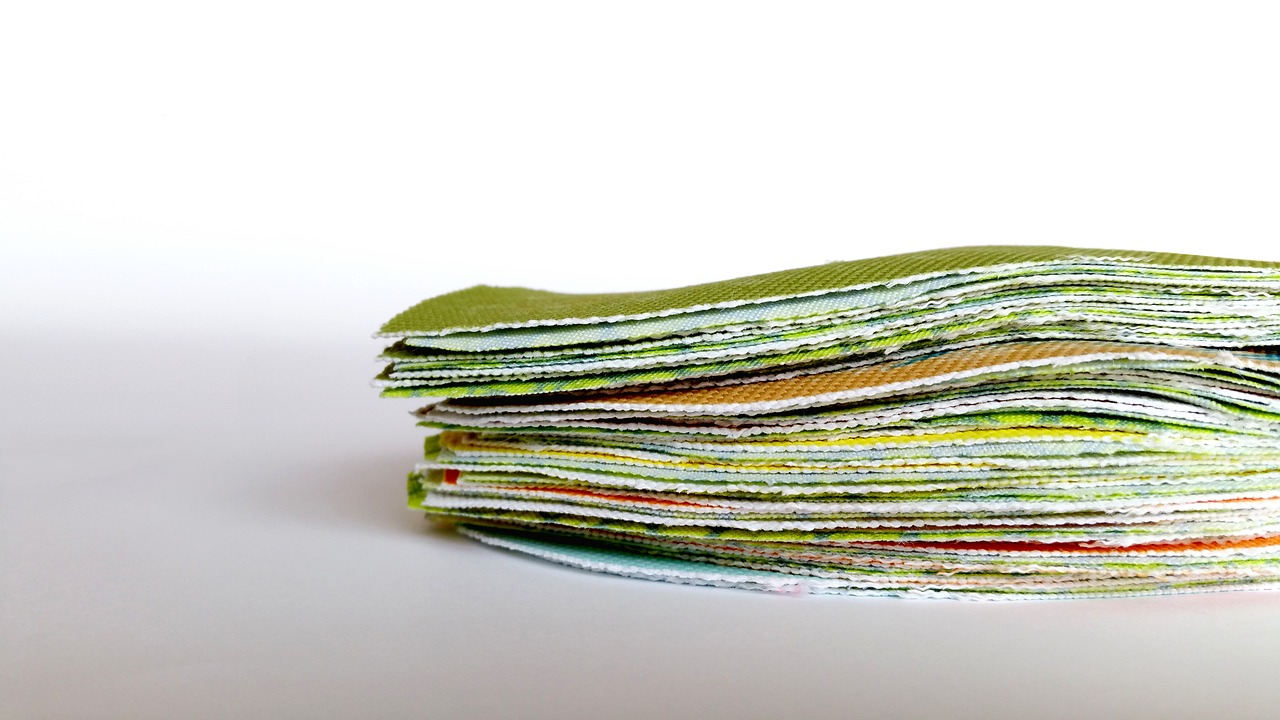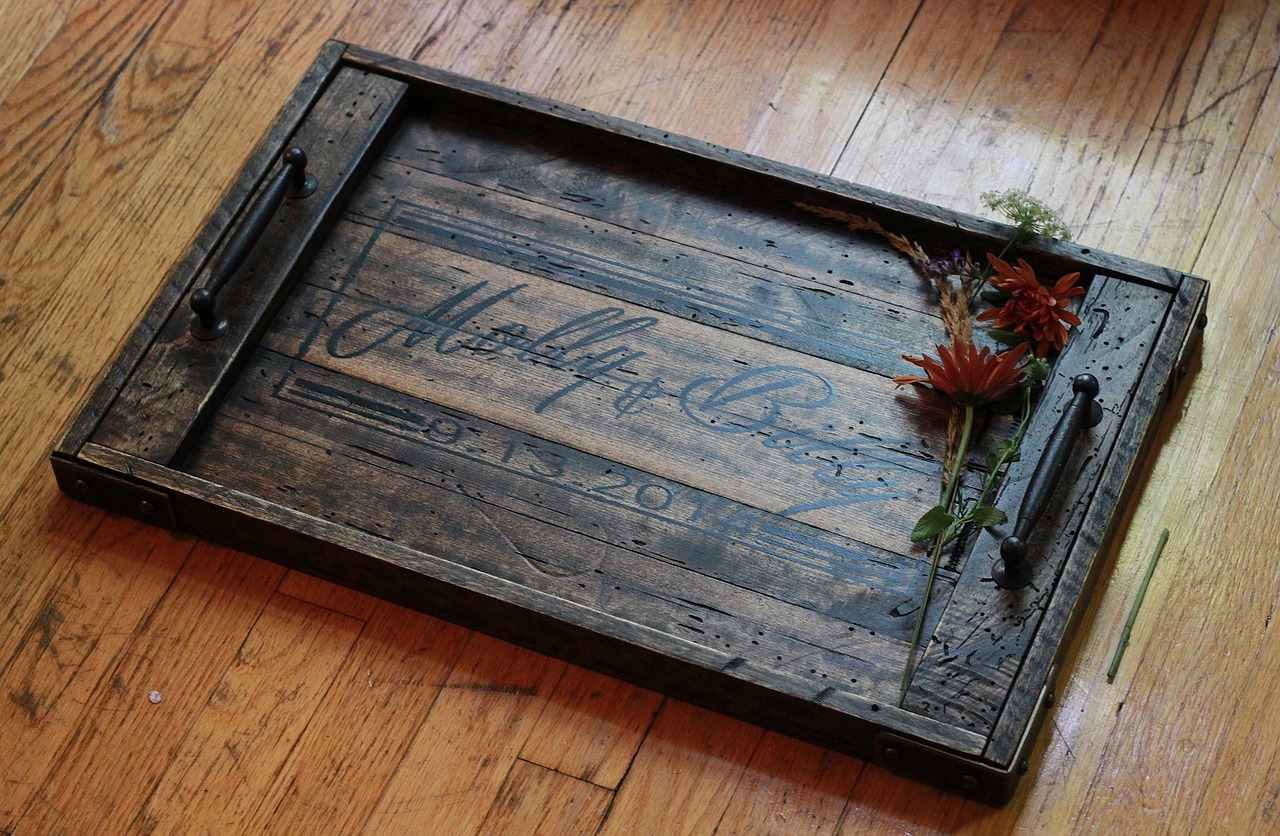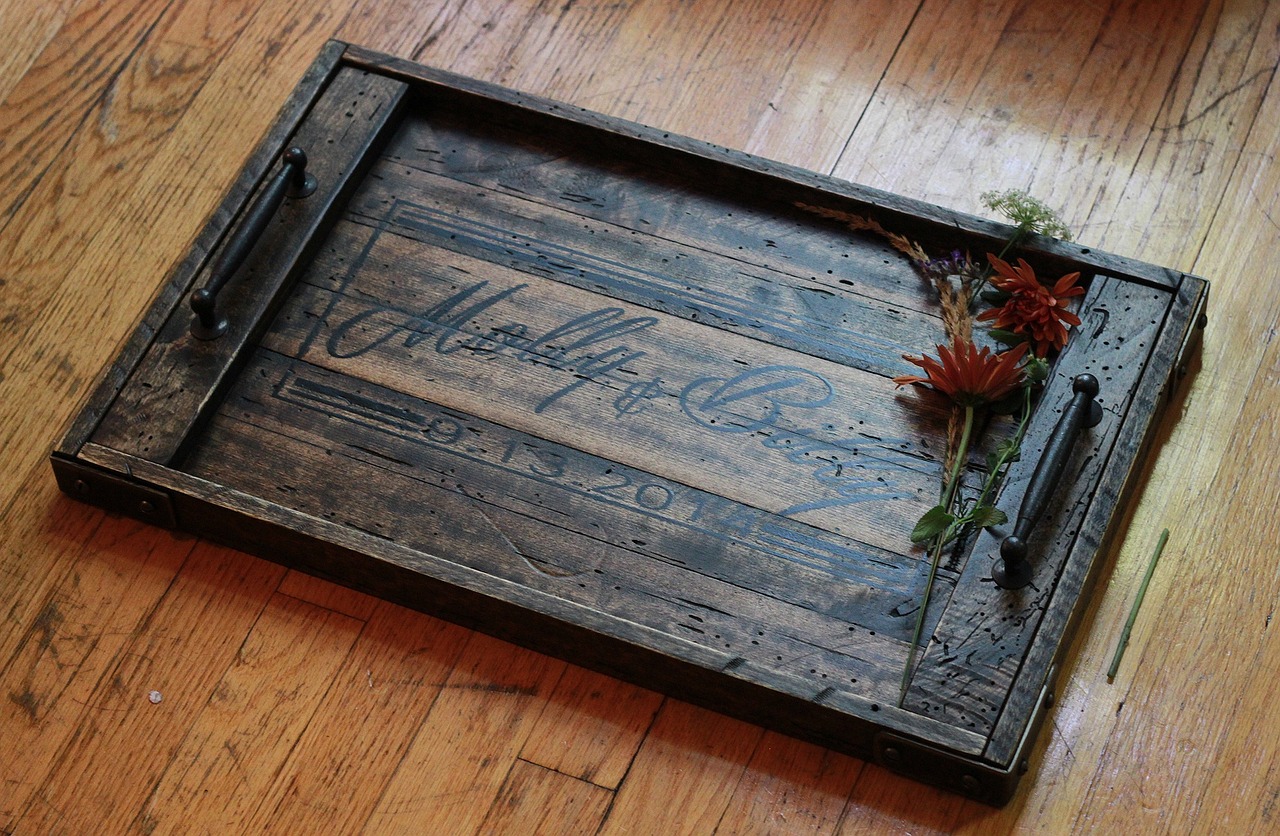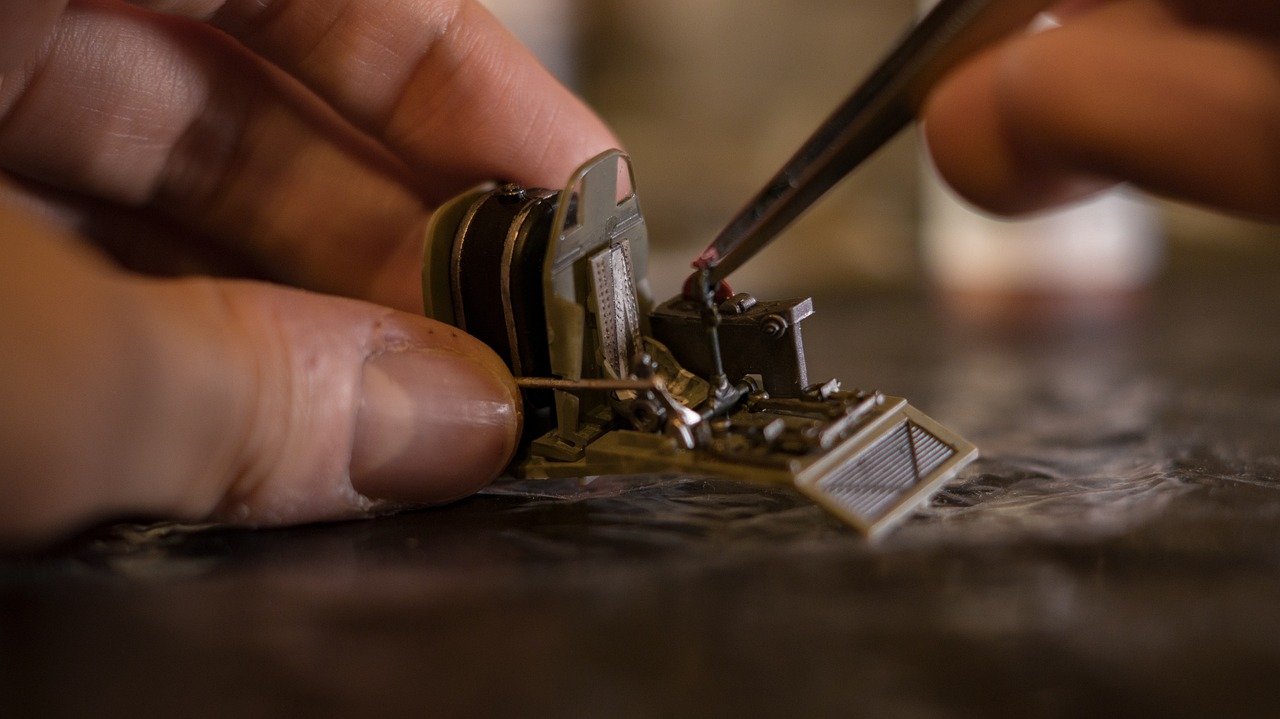How to Make a DIY Ottoman for Your Home
Creating a DIY ottoman is not just a fun project; it's a fantastic way to add a personal touch to your home decor. Whether you're looking for a stylish footrest, a coffee table alternative, or a hidden storage solution, making your own ottoman can be a rewarding experience. In this article, we'll guide you through the entire process, from selecting the right materials to adding those unique finishing touches that will make your ottoman truly one-of-a-kind.
When it comes to crafting your own ottoman, the materials you choose can make a huge difference in both durability and aesthetics. You want something that not only looks good but also stands the test of time. Start by considering fabric options; think about whether you want something soft like velvet for a luxurious feel or something more durable like canvas for everyday use. Don't forget to factor in the foam for cushioning. High-density foam can provide comfort while maintaining shape, but if you're on a budget, look for alternatives that still offer good support. Finally, the frame's material is crucial; options include plywood, MDF, and solid wood, each with its own set of benefits.
Having the right tools can transform a daunting DIY task into a breeze. You don't need to break the bank on fancy equipment, but there are a few essentials that will make your life easier. You'll want a measuring tape for accuracy, a circular saw for cutting wood, and a staple gun for upholstery. Additionally, a drill will come in handy for assembling the frame, and a screwdriver will help with any finishing touches. By gathering these tools ahead of time, you'll set yourself up for a smooth crafting experience.
Now that you've gathered your materials and tools, it's time to get to the fun part! Accurate measurements and cuts are vital for a well-constructed ottoman. Start by sketching a simple design of your ottoman, noting the dimensions. Remember, measure twice, cut once! Using your measuring tape, mark the wood pieces carefully before cutting. If you're unsure about your cuts, practice on scrap wood first. This way, you can perfect your technique without the pressure of ruining your main materials.
When selecting wood for your ottoman's frame, consider the following options:
| Type of Wood | Pros | Cons |
|---|---|---|
| Plywood | Affordable, lightweight, easy to work with | Less durable than solid wood |
| MDF | Smooth surface, easy to paint, budget-friendly | Not water-resistant, can sag over time |
| Solid Wood | Very durable, great aesthetic appeal | More expensive, heavier to work with |
Safety should always come first when working with power tools. Here are some essential safety tips to keep in mind:
- Always wear protective eyewear to shield your eyes from sawdust.
- Keep your fingers clear of the cutting path.
- Ensure your workspace is clean and free of distractions.
- Unplug power tools when changing blades or making adjustments.
Upholstering your ottoman is where the magic happens. This step adds not just comfort but also a splash of personality to your piece. Start by laying your fabric flat, and then place your foam on top, followed by the wooden frame. Pull the fabric tightly around the edges and use a staple gun to secure it underneath the frame. Make sure to smooth out any wrinkles for a professional finish. If you're feeling adventurous, consider adding a tufted design for an extra touch of elegance!
Why stop at just a pretty piece? Consider incorporating functional features that enhance usability. For example, adding a hidden storage compartment can help declutter your living space. You can achieve this by creating a removable top or a hinged lid. Additionally, wheels can be a game-changer, allowing you to move your ottoman around with ease, making it a versatile addition to your home.
Storage ottomans can be a lifesaver in small spaces. Think creatively about how to integrate hidden storage into your design. You might design a simple box-style ottoman with a lift-top or even create a more complex design with multiple compartments. This way, you can store blankets, magazines, or even toys, keeping your space tidy and organized.
The base of your ottoman impacts both style and stability. Whether you choose to buy pre-made legs or craft your own, ensure they complement your design. For a modern look, consider sleek metal legs; for a more rustic feel, wooden legs might be the way to go. Remember, the right base will not only enhance the aesthetic appeal but also provide the necessary support for your ottoman.
Q: How much does it cost to make a DIY ottoman?
A: The cost can vary widely depending on materials and design, but you can expect to spend anywhere from $50 to $200.
Q: Can I use old furniture to make an ottoman?
A: Absolutely! Repurposing old furniture is a great way to create a unique ottoman while being environmentally friendly.
Q: How long does it take to make a DIY ottoman?
A: Depending on your skill level and the complexity of the design, it can take anywhere from a few hours to a couple of days.

Choosing the Right Materials
When it comes to crafting your own DIY ottoman, choosing the right materials is not just a matter of aesthetics; it's about ensuring durability and functionality too. Imagine sinking into a plush ottoman after a long day, feeling the soft fabric against your skin while knowing it’s built to last. To achieve this, you'll need to consider various options for fabric, foam, and wood that will elevate your project from basic to breathtaking.
First up, let’s talk about fabrics. The fabric you choose will set the tone for your ottoman's style and comfort. You might want to opt for durable upholstery fabrics like canvas or denim if you have kids or pets. These materials can withstand the wear and tear of daily life while still looking chic. On the other hand, if you’re going for a more luxurious feel, consider using velvet or microfiber. These fabrics not only feel great but also add a touch of elegance to your living space.
Next, we have the foam. The type of foam you select will determine how comfortable your ottoman will be. High-density foam is a popular choice because it offers excellent support and retains its shape over time. You might also want to consider memory foam for a softer, more inviting experience. Just think about it: when you plop down on that ottoman, you want it to cradle you like a cloud, right? So, don't skimp on this part!
Finally, let’s discuss the frame of your ottoman. The wood you choose is crucial for stability. Plywood, for instance, is lightweight and easy to work with, making it a great option for beginners. However, if you’re looking for something more robust, solid wood provides excellent durability and can withstand heavier weights. While MDF is another option, it’s important to note that it may not hold up as well under stress. To help you decide, here’s a quick comparison:
| Type of Wood | Pros | Cons |
|---|---|---|
| Plywood | Lightweight, cost-effective | Less sturdy than solid wood |
| MDF | Easy to work with, smooth finish | Not as strong, can sag over time |
| Solid Wood | Highly durable, long-lasting | More expensive, heavier |
In conclusion, the materials you choose will significantly impact your DIY ottoman's overall look and functionality. Take your time to explore different options and think about how each material will fit into your lifestyle. After all, this is not just a piece of furniture; it’s an extension of your personal style and a cozy spot for relaxation. So, whether you’re lounging with a good book or using it as a footrest while binge-watching your favorite series, make sure to invest in quality materials that will serve you well for years to come.
- What fabric is best for a DIY ottoman?
Durable upholstery fabrics like canvas or denim are great for high-traffic areas, while velvet offers a more luxurious feel.
- How thick should the foam be for comfort?
A thickness of 2-4 inches is generally recommended for a comfortable seating experience.
- Can I use recycled materials for my ottoman?
Absolutely! Using recycled wood or fabric can add character and be an eco-friendly choice.

Essential Tools for the Project
When embarking on your DIY ottoman adventure, having the right tools at your disposal can make a world of difference. Think of your tools as the magic wands that transform simple materials into a stunning piece of furniture. You wouldn't want to set off on a road trip without a map, right? Similarly, a well-equipped toolkit is essential for a smooth DIY journey.
First and foremost, you'll need a measuring tape. This trusty tool will help you ensure that every cut and every seam is precise. After all, a well-measured piece is half the battle won. Next, a circular saw or a jigsaw is crucial for cutting your wood to the desired dimensions. These tools are like the trusty steed of your project, carrying you through the cutting phase with ease. If you're not comfortable using power tools, a hand saw will do the trick, though it may require a bit more elbow grease.
But wait, there's more! You'll also need a drill for making holes and securing screws. Think of it as the glue that holds your project together. Pair it with some screws and a screwdriver to ensure your ottoman frame is sturdy and reliable. When it comes to assembling your ottoman, a staple gun is a game-changer. It allows you to attach fabric quickly and securely, giving your ottoman that polished, professional look.
Don’t forget about the fabric scissors! These are essential for cutting your upholstery fabric cleanly and smoothly, ensuring that there are no frayed edges. You’ll also want to have some foam padding to provide comfort. A sharp knife or an electric knife can be incredibly helpful for cutting the foam to size, making it easier to shape your ottoman's top.
Lastly, a clamp can be a lifesaver when you're working with wood. It holds pieces together while the glue dries or while you secure screws, ensuring everything stays aligned. Think of it as your third hand, keeping everything in place while you work your magic.
To summarize, here’s a quick table of the essential tools you'll need:
| Tool | Purpose |
|---|---|
| Measuring Tape | For accurate measurements |
| Circular Saw / Jigsaw | For cutting wood |
| Drill | For making holes and securing screws |
| Staple Gun | For attaching fabric |
| Fabric Scissors | For cutting upholstery fabric |
| Foam Padding | For comfort |
| Clamps | For holding pieces together |
With these tools in hand, you're well on your way to crafting a stunning DIY ottoman that not only looks great but also serves a functional purpose in your home. So, roll up your sleeves, gather your materials, and let the creativity flow!
- What type of fabric is best for an ottoman? Look for durable fabrics like canvas, upholstery fabric, or faux leather that can withstand wear and tear.
- Can I use recycled materials for my ottoman? Absolutely! Using reclaimed wood or fabric can add character and is an eco-friendly option.
- How do I clean my DIY ottoman? Regularly vacuum it to remove dust, and for stains, use a mild detergent with a damp cloth.
- What is the best way to add storage to my ottoman? Consider a hinged top or a removable lid to create hidden storage space without compromising style.

Measuring and Cutting Wood
When it comes to creating your own DIY ottoman, accurately is crucial. Think of this process as the foundation of a house; if the foundation isn’t solid, everything built on top of it will be shaky. So, grab your measuring tape, a pencil, and let’s dive into the nitty-gritty of getting those dimensions just right!
The first step is to determine the size of your ottoman. Do you want it to be a footrest, a coffee table, or perhaps a storage unit? Once you have a vision, sketch out your design with precise measurements. A good rule of thumb is to keep the height between 15 to 18 inches, but feel free to adjust based on your personal preference and the surrounding furniture. Remember, it’s all about what fits your space and style!
Next, it’s time to measure the wood pieces you will need. Typically, you’ll require four sides for the frame, a top, and a bottom. Here’s a quick breakdown of the pieces:
| Piece | Dimensions |
|---|---|
| Side Panels | 15" x 18" |
| Top Panel | 18" x 18" |
| Bottom Panel | 18" x 18" |
Once you have your measurements, it’s time to cut the wood. Use a circular saw or a miter saw for clean, straight cuts. Always remember to wear safety goggles to protect your eyes from sawdust and flying debris. Before making any cuts, double-check your measurements. As the saying goes, “measure twice, cut once.” This simple mantra can save you from costly mistakes!
After cutting, it’s advisable to sand the edges of the wood pieces to avoid splinters and ensure a smooth finish. You can use sandpaper or an electric sander for this task. It’s a small step that can make a big difference in the overall look and feel of your ottoman.
In summary, measuring and cutting wood for your DIY ottoman is an essential step that requires attention to detail and a little bit of patience. By taking the time to plan your dimensions, cut accurately, and finish the edges, you’ll set yourself up for success in the following stages of your project. So, roll up your sleeves, and let’s get to work!
- What type of wood is best for an ottoman? Plywood is often recommended for its balance of strength and weight, but solid wood can offer more durability.
- How do I ensure my cuts are straight? Using a guide or a straight edge can help keep your cuts even and straight.
- Can I use reclaimed wood for my ottoman? Absolutely! Reclaimed wood adds character and is an eco-friendly option.

Types of Wood to Consider
When it comes to crafting your DIY ottoman, the type of wood you choose is crucial for both durability and style. Each type of wood has its unique characteristics, which can significantly affect the final product. Let's dive into some popular options you might consider for your ottoman's frame.
Plywood is often the go-to choice for DIY projects. It's made by gluing together thin layers of wood veneer, which makes it incredibly strong yet lightweight. This versatility allows for easy handling and cutting, making it a favorite among DIY enthusiasts. However, keep in mind that while plywood is affordable, it might not have the same aesthetic appeal as solid wood. If you're planning to cover it with fabric, though, that concern diminishes.
MDF (Medium Density Fiberboard) is another popular option. It's made from wood fibers bonded together with resin, creating a smooth surface that's perfect for painting or upholstering. MDF is generally more affordable than solid wood and offers a consistent finish, making it an excellent choice for those looking to achieve a modern look. However, it's essential to note that MDF is heavier than plywood and can be less durable if exposed to moisture.
Lastly, solid wood is the crème de la crème of materials. Options like oak, maple, or pine provide not only exceptional strength but also a beautiful natural grain that can enhance the overall aesthetic of your ottoman. Solid wood can withstand wear and tear much better than its engineered counterparts, making it a long-term investment. However, it typically comes at a higher price point and may require more maintenance to keep it looking its best.
In summary, consider the following when selecting wood for your DIY ottoman:
- Plywood: Lightweight, strong, and budget-friendly.
- MDF: Smooth finish, affordable, but heavier and less durable.
- Solid Wood: Durable, aesthetically pleasing, but more expensive.
Choosing the right wood depends on your personal preferences, budget, and the desired look of your ottoman. Whether you opt for the practicality of plywood, the smooth finish of MDF, or the timeless beauty of solid wood, each option has its benefits and can help you create a stunning piece that fits perfectly in your home.
Q1: What type of wood is best for a beginner DIY project?
A1: Plywood is often recommended for beginners due to its ease of use, affordability, and lightweight nature.
Q2: Can I use reclaimed wood for my ottoman?
A2: Absolutely! Reclaimed wood adds character and uniqueness to your project, but ensure it's properly treated for safety and durability.
Q3: How do I ensure my ottoman is sturdy?
A3: Use quality materials, ensure accurate measurements, and consider reinforcing joints with screws or brackets for added stability.
Q4: Is solid wood worth the investment?
A4: If you're looking for durability and a timeless aesthetic, solid wood is a great investment that can last for years with proper care.

Safety Tips for Cutting Wood
When it comes to woodworking, safety should always be your number one priority. Cutting wood can be a rewarding experience, but it can also lead to accidents if proper precautions are not taken. Before you even pick up that saw, take a moment to prepare your workspace and gather the right safety gear. Always wear safety goggles to protect your eyes from flying debris, and don’t forget a dust mask to avoid inhaling any harmful particles. It's a bit like putting on your armor before heading into battle—you want to be protected!
Next, consider your clothing. Loose-fitting clothes can easily get caught in machinery, so opt for snug, comfortable attire. If you're using power tools, make sure your hair is tied back and that you're wearing closed-toe shoes for extra protection. Think of it as setting the stage for a safe performance; every detail counts!
Before you start cutting, ensure your work area is clean and organized. Remove any unnecessary items from your workspace to prevent tripping hazards. It's like decluttering your mind before a big exam—eliminating distractions helps you focus on what’s important. Also, check your tools for any damage. A dull blade can be just as dangerous as a broken one, so ensure everything is in good working order.
When it’s time to make your cuts, always use a stable work surface. A workbench or sawhorses can provide the support you need. If you're working with larger pieces of wood, having a friend to help stabilize the material can make a world of difference. Remember, teamwork makes the dream work! Additionally, always cut away from your body and keep your hands at a safe distance from the blade. This simple rule can save you from serious injuries.
Lastly, never rush the process. Take your time and make sure each cut is precise. If you're feeling fatigued or distracted, it’s best to take a break. Just like a marathon runner knows when to pace themselves, you should listen to your body and ensure you're in the right mindset to work safely. By following these tips, you can transform your DIY project into a fun and safe experience, allowing you to focus on the joy of creating your beautiful ottoman!
Here are some common questions about cutting wood safely:
- What type of safety gear should I wear? Always wear safety goggles, a dust mask, and closed-toe shoes. Gloves can also be useful, but make sure they fit snugly.
- How can I prevent kickback while cutting? Ensure your wood is securely clamped and always use a sharp blade to minimize the risk of kickback.
- Is it safe to cut wood alone? While it’s possible, having a buddy can greatly enhance safety, especially with larger pieces of wood.

Upholstering Your Ottoman
Upholstering your ottoman is where the magic truly happens! This is the step that transforms a simple frame into a stunning piece of furniture that can elevate your entire room's decor. The right fabric can not only enhance the aesthetic appeal but also add a layer of comfort. So, let’s dive into the exciting world of upholstery!
First things first, you need to choose the fabric. The options are nearly endless, from luxurious velvet to durable canvas. Think about your lifestyle: do you have pets or kids? If so, you might want to lean towards fabrics that are stain-resistant or easy to clean. Here’s a quick overview of some popular upholstery fabrics:
| Fabric Type | Durability | Maintenance |
|---|---|---|
| Velvet | Moderate | Dry clean recommended |
| Canvas | High | Machine washable |
| Leather | Very High | Wipe clean with a damp cloth |
| Microfiber | High | Spot clean |
Once you’ve chosen your fabric, it’s time to gather your tools. You’ll need a staple gun, scissors, a measuring tape, and possibly some foam padding for extra comfort. The foam will not only provide a cozy feel but also give your ottoman a more polished look. When selecting foam, make sure to choose a thickness that complements your design; typically, 2-3 inches is a good starting point.
Now, let’s get to the fun part: the actual upholstery process! Start by measuring and cutting your fabric. It's essential to leave a few extra inches around the edges to ensure you have enough material to work with. Lay your fabric out flat, place the foam on top, and then position your ottoman frame over it. This will help you visualize how the fabric will wrap around the ottoman.
Next, pull the fabric tightly over the foam and frame. Begin by stapling one side, then move to the opposite side, pulling the fabric taut as you go. This technique not only keeps the fabric tight but also ensures a smooth finish. Remember to fold the corners neatly for a professional look—think of it like wrapping a present, but for your furniture!
After securing the fabric all around, trim any excess material. You can then add a finishing touch by attaching a decorative trim or piping along the edges. This small detail can truly make your ottoman stand out and give it that extra flair.
In conclusion, upholstery is not just about covering; it’s about expressing your style and making your ottoman a centerpiece of your living space. Whether you opt for a bold pattern or a subtle hue, the choice is yours. With a little patience and creativity, you’ll have a stunning piece that’s both functional and beautiful!
- What type of fabric is best for an ottoman? It depends on your needs! For high durability, consider canvas or leather. For a luxurious feel, velvet is a great choice.
- Can I use a regular stapler for upholstery? It's recommended to use a staple gun for better grip and durability.
- How do I clean my upholstered ottoman? Cleaning methods vary by fabric; always check the manufacturer's recommendations for the best care.

Adding Functional Features
When it comes to creating a DIY ottoman, functionality is just as important as style. After all, what's the point of a beautiful piece of furniture if it doesn't serve a purpose? By incorporating functional features into your ottoman design, you can enhance its usability and make it a standout piece in your home. Think of your ottoman as a multi-tool; it can be a footrest, a coffee table, or even a storage unit if you play your cards right!
One popular option is to integrate hidden storage into your ottoman. This is especially useful in smaller spaces where every inch counts. Imagine lifting the top of your ottoman to find a cozy nook that holds blankets, magazines, or even your remote control! To achieve this, you can use a simple lift-top mechanism that allows the lid to open easily while keeping everything neatly tucked away. You might want to consider using a hollow frame for the ottoman to create that hidden compartment effortlessly.
Another feature to consider is adding wheels to your ottoman. This can transform it from a stationary piece into a mobile one, allowing you to reposition it according to your needs. Whether you're moving it closer to the couch for movie night or shifting it out of the way during a gathering, wheels can add a level of versatility that is hard to beat. Just make sure to choose sturdy, lockable wheels to ensure safety and stability when in use.
Additionally, think about incorporating a removable top. This feature can add a fun twist to your ottoman, making it not just a piece of furniture but also a functional accessory. A removable top allows you to use the ottoman as a tray for snacks or drinks during a gathering, or even as a makeshift table for board games. You can achieve this by using a simple hinge mechanism or even magnetic closures to keep the top secure yet easily accessible.
In conclusion, by adding these functional features to your DIY ottoman, you’re not just crafting a piece of furniture; you're creating a versatile addition to your home that can adapt to your lifestyle. Remember, the key is to blend style and functionality seamlessly. So, as you embark on this DIY journey, let your creativity flow and think outside the box!
- Can I customize the size of my ottoman? Absolutely! You can measure the space you want to fill and adjust the dimensions accordingly.
- What type of fabric is best for upholstering my ottoman? It depends on your style and usage. For durability, consider fabrics like canvas or faux leather.
- Are there any safety tips for using wheels on my ottoman? Yes, ensure the wheels have locks to prevent rolling and choose a weight limit that suits your design.

Incorporating Storage Solutions
When it comes to maximizing space in your home, storage solutions are a game changer, especially when integrated into a DIY ottoman. Imagine having a stylish piece of furniture that not only serves as a footrest or extra seating but also hides away your clutter. This multifunctional approach can significantly enhance the utility of your living area. So, how can you effectively incorporate storage into your ottoman design? Let's dive into some creative ideas!
One of the most popular designs is the lift-top ottoman. This design allows you to simply lift the top of the ottoman to access a spacious storage compartment inside. It's perfect for stowing away blankets, magazines, or even board games. To create a lift-top ottoman, you can use a set of sturdy hinges that attach to the back of the top panel. This way, the top can swing open easily while maintaining a sleek look.
Another option is to design your ottoman with hidden compartments. You can create a false bottom or a sliding drawer within the ottoman. This not only adds a unique element to your design but also keeps your items organized and out of sight. For instance, if you choose to incorporate a drawer, ensure it's on smooth tracks for easy access. Remember, the goal is to keep your space tidy while still being stylish!
For those who love a touch of whimsy, consider using woven baskets or fabric bins that fit perfectly inside your ottoman. This way, you can easily pull out the bins when you need something and tuck them back in when you're done. This method adds a layer of texture and color to your ottoman while keeping it functional. Plus, it’s a great way to customize the look of your ottoman based on your personal style.
When designing your ottoman, think about the size and shape of the storage space. It’s essential to ensure that whatever you choose to store fits comfortably without compromising the structure of the ottoman. For instance, if you plan to store larger items, you might want to make your ottoman a bit larger or deeper. Conversely, if you only need to store small items, a compact design will suffice.
Finally, don't forget about the legs or base of your ottoman. If you choose to elevate your ottoman with legs, consider how this affects the storage space underneath. You can create a design that allows for additional storage beneath the ottoman, making it even more versatile. Think of it as a two-in-one solution that not only looks good but also works hard for you!
In conclusion, incorporating storage solutions into your DIY ottoman not only enhances its functionality but also adds an element of surprise to your home decor. Whether you opt for a lift-top design, hidden compartments, or stylish bins, the possibilities are endless. So grab your tools and let your creativity flow!
- What materials are best for creating a storage ottoman? - Plywood or MDF are great for the frame, while upholstery fabric can add style.
- How can I make my storage ottoman more stable? - Ensure that the base is sturdy and consider using thicker wood for the frame.
- Can I add wheels to my ottoman? - Yes! Adding wheels can make your ottoman mobile, perfect for rearranging your space.

Choosing the Right Legs or Base
When it comes to crafting your DIY ottoman, selecting the right legs or base is crucial. Not only do they provide stability, but they also play a significant role in the overall aesthetics of your piece. Imagine your ottoman as the cherry on top of your living room sundae; the legs can either elevate its style or detract from it. So, how do you choose the perfect legs or base? Let’s dive into the options!
First off, you need to consider the style of your ottoman. Are you going for a modern look, a rustic vibe, or something more traditional? Each style has its own set of compatible leg designs. For instance, sleek metal legs can give your ottoman a contemporary feel, while wooden legs with intricate carvings can add a touch of elegance. Take a moment to visualize how the legs will complement your existing furniture. You wouldn’t want your ottoman to feel like a stranger in your own home, right?
Next, think about the height of your ottoman. The legs you choose should align with the height of your sofa or chairs to create a harmonious seating arrangement. A good rule of thumb is to ensure that the top of the ottoman is around the same height as the seat of your sofa. If you’re unsure, grab a measuring tape and check! You can also opt for adjustable legs if you want a bit of flexibility in your design.
Now, let’s talk about material. The legs can be made from various materials, each offering different benefits. Here’s a quick rundown:
| Material | Pros | Cons |
|---|---|---|
| Wood | Durable, classic look | Can be heavy, may require maintenance |
| Metal | Modern aesthetic, lightweight | Can scratch floors, may rust |
| Plastic | Affordable, easy to clean | Less sturdy, can look cheap |
Lastly, consider the functionality of your ottoman. Are you planning to use it as a footrest, a coffee table, or even for storage? If you want it to double as a coffee table, you might want to opt for sturdier legs that can withstand weight. If storage is your game, think about legs that allow for easy access, like a base that lifts off or wheels for mobility.
In conclusion, the legs or base of your DIY ottoman are more than just a support system; they are a vital part of the overall design. By taking into account the style, height, material, and functionality, you can ensure that your ottoman not only looks fantastic but also serves its purpose effectively. So go ahead, get creative, and let those legs shine!
- What is the best height for an ottoman? Ideally, the ottoman should be the same height as the seat of your sofa or chairs.
- Can I use different materials for the legs? Absolutely! Mixing materials can create a unique look, just ensure they complement each other.
- How can I make my ottoman more stable? Choose sturdy materials for the legs and ensure they are securely attached to the base.
- Are there any safety tips for using wheels on my ottoman? Yes! Make sure the wheels lock in place to prevent the ottoman from rolling away unexpectedly.
Frequently Asked Questions
- What materials do I need to make a DIY ottoman?
To create a stylish DIY ottoman, you'll need materials like fabric, foam, wood for the frame, and upholstery staples. Don't forget about tools like a saw, drill, and measuring tape!
- How do I choose the right fabric for my ottoman?
Choosing the right fabric depends on your style and usage. Consider durability, texture, and color. Fabrics like canvas or upholstery-grade materials are great for longevity and ease of cleaning.
- What type of wood is best for the ottoman frame?
Plywood is lightweight and cost-effective, while solid wood offers strength and durability. MDF is another option, providing a smooth surface for upholstery. Each type has its pros and cons, so choose based on your needs!
- How can I ensure accurate measurements when cutting wood?
Measure twice, cut once! Use a reliable measuring tape and a square to mark your cuts. Take your time with measurements—precision is key to a well-constructed ottoman.
- What safety tips should I follow when cutting wood?
Always wear safety goggles and gloves. Make sure your workspace is clear and stable. If you're using power tools, read the instructions carefully and never rush the process!
- Can I add storage to my DIY ottoman?
Absolutely! Incorporating hidden storage is a fantastic way to declutter. You can create a removable top or design compartments within the ottoman for a functional touch.
- What kind of legs or base should I choose for my ottoman?
The legs or base can dramatically influence your ottoman's style and stability. Consider options like wooden legs for a classic look or wheels for mobility. Match them with your overall decor for a cohesive design!


















